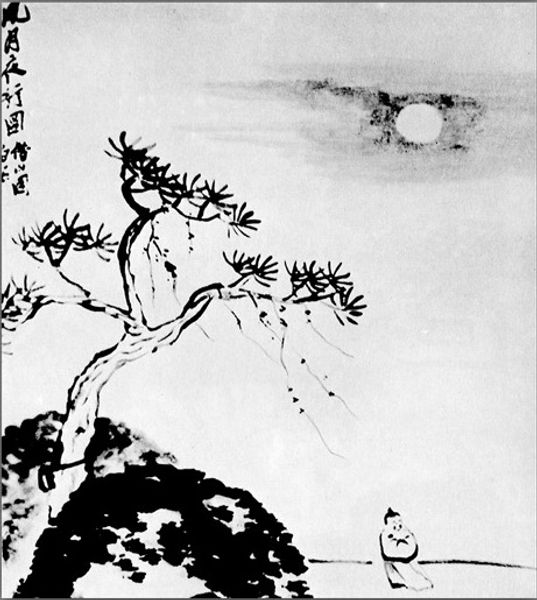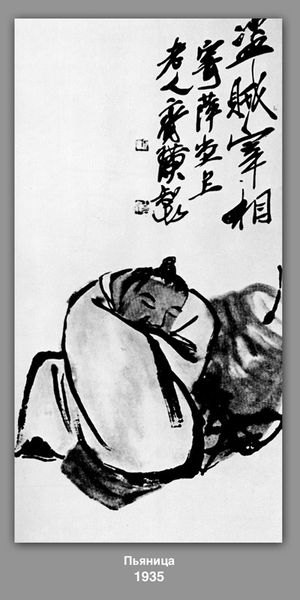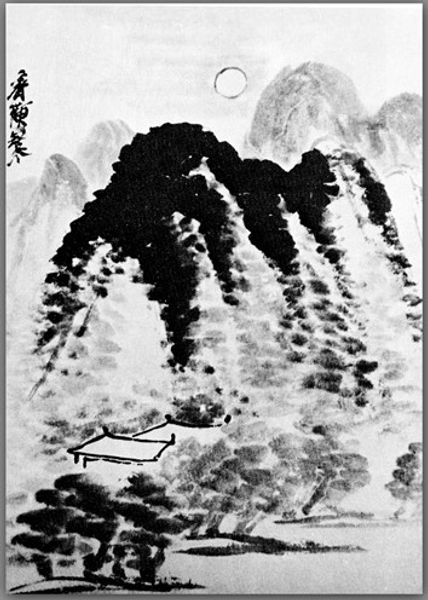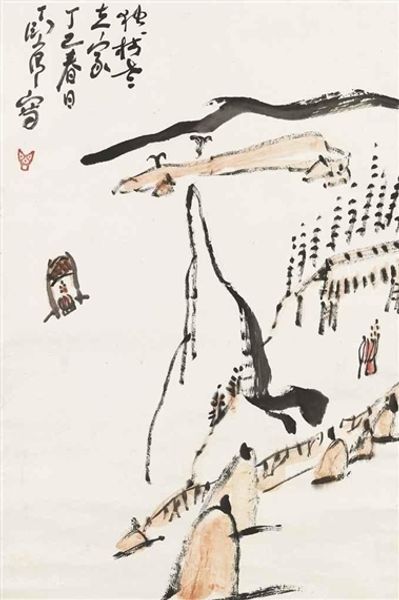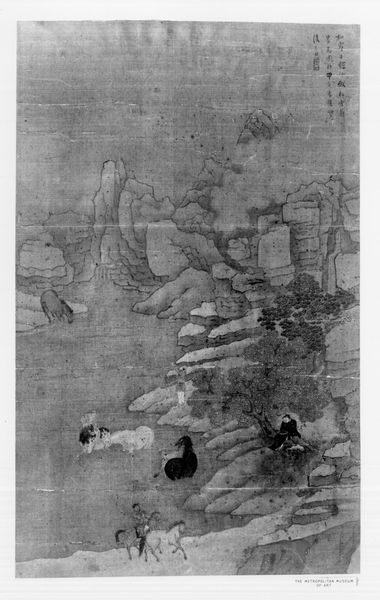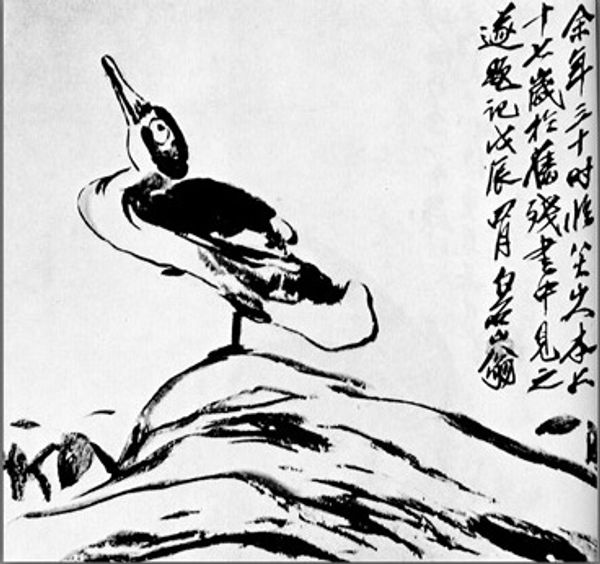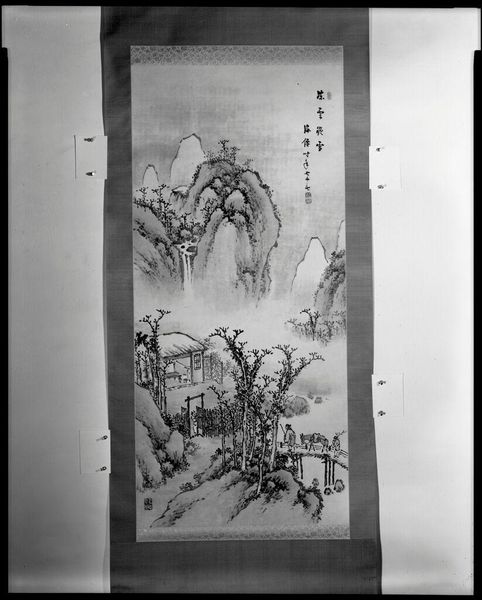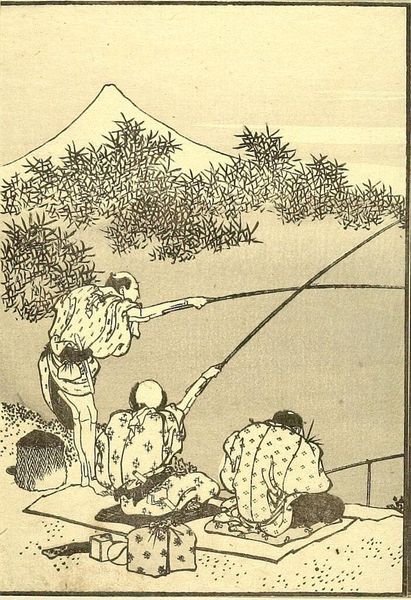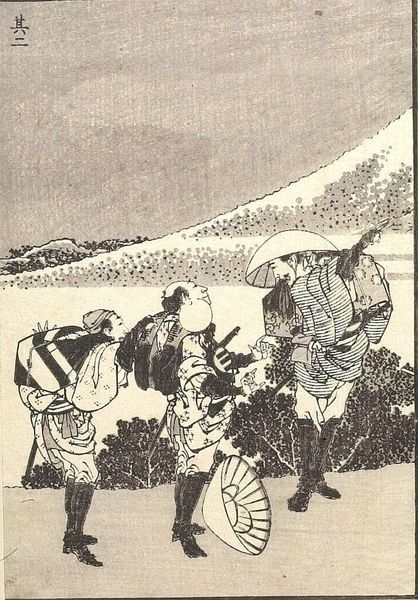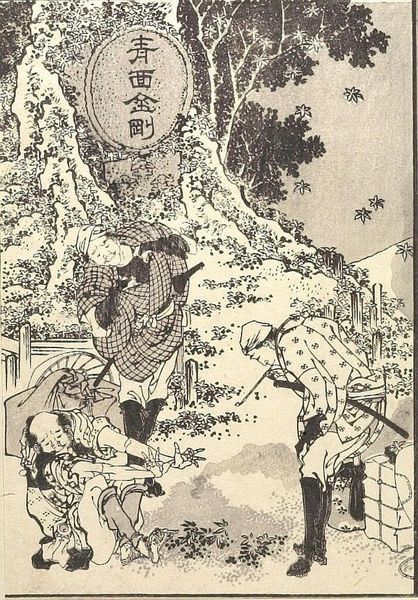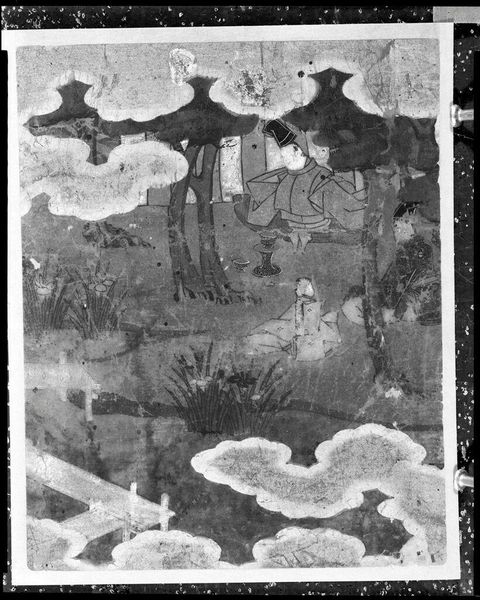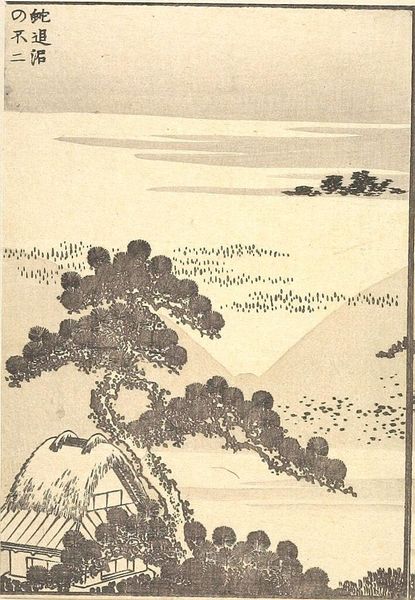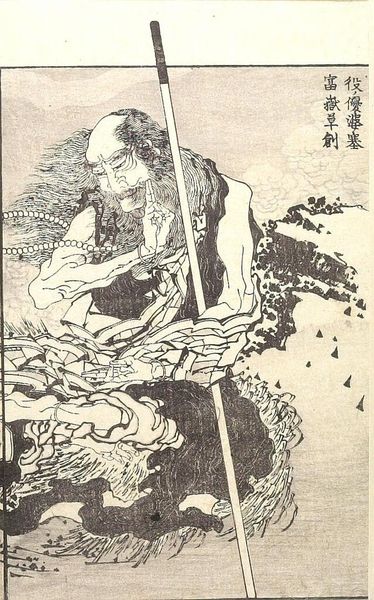
drawing, paper, ink
#
drawing
#
asian-art
#
landscape
#
figuration
#
paper
#
text
#
ink
#
line
#
calligraphy
Copyright: Public domain China
Curator: “Plowing in the Rain,” a 1955 ink drawing on paper by Qi Baishi. The monochrome palette gives the impression of stark simplicity, but there's an evocative contrast between the landscape above and the laboring farmer below. How does this artwork strike you? Editor: I see two very distinct parts. There's the serene landscape rendered with quick brushstrokes and then this much darker, weighted depiction of the farmer and his ox plowing. The ink seems almost heavier in the bottom section. What are your thoughts? Curator: Exactly! The difference in the application of ink directs our attention to the means of production and labor. What can that tell us about consumption? In what way are both intertwined? This artist highlights the hard physical effort required for cultivation, an effort often romanticized or overlooked in depictions of rural life. Editor: So, the deliberate contrast is meant to make us think about the actual labor involved in creating a seemingly peaceful scene. How would the cultural and societal views on agricultural work in China at that time influence Qi Baishi's work? Curator: In post-revolutionary China, celebrating the working class became central to art. However, Qi Baishi offers us more than propaganda; we get to consider his direct engagement with the materials of artmaking as a method to celebrate this sector. Think of ink as a symbol of traditional scholarship meeting with a more populist approach to image making and consider also its accessibility as a vehicle of mass dissemination. This makes you appreciate the actual materials that are at play: the artist, the paper, the ink, the brush…and the farmer’s labor, the ox, the field, and eventually, the food it will provide. The “how” really affects the “what” doesn’t it? Editor: Definitely. Seeing it that way shows that it’s a very complex visual essay about production and culture at this moment. The stark materials point to all the subtle arguments embedded in the drawing. Thanks, that makes this image a lot more interesting than just a quick snapshot of rural life.
Comments
No comments
Be the first to comment and join the conversation on the ultimate creative platform.
